- Home
- Tom Clancy
Carrier: A Guided Tour of an Aircraft Carrier Page 13
Carrier: A Guided Tour of an Aircraft Carrier Read online
Page 13
Second Home—Squadron Life
Once the FRS IPs have concluded that a “nugget” (rookie aviator) is ready, a call goes out to the detailing office to look for a spot in one of the fleet squadrons. Squadrons are the basic fighting unit and building block of CVWs (and of all naval aviation); and for the next ten years or so, squadron life will dominate the new nugget’s career. But before we get to that, let’s take a quick look at some Navy jargon and designations. Though the Navy is notorious for its clumsy and awkward-sounding acronyms and conjunctive designations, these batches of alphabet soup do actually serve a purpose. Consider the following table:
Naval Squadron Designations
If you understand the squadron designation, and add the squadron’s number behind it, you know what kind of unit you are talking about. For example, VF-14 is a fighter squadron, which just happens to fly F-14 Tomcats. They are known as the “Tophatters,” and their heritage dates back to the 1920s, when they were originally designated VF-2, flying aboard the old Lexington (CV-2). The system is actually quite logical and simple, if you take the time to understand it.
Other facts about Navy squadrons are not quite so obvious; the number of aircraft and personnel within a particular kind of unit, for example. An F/A-18 Hornet squadron usually deploys with a dozen aircraft, eighteen air crew, and a support/maintenance base of several hundred personnel. Conversely, each EA-6B Prowler squadron has only four airplanes, but more air crew (about two dozen) and maintenance personnel than the Hornet unit. For each Prowler carries four air crew (compared with the F/A-18’s single pilot), and the jamming aircraft require much more maintenance than the Hornets. The squadrons themselves are structured pretty much alike. A full commander (O-5) generally commands, with a lieutenant commander as the executive officer. Backing them up are department heads for maintenance, intelligence, training, operations, and even public affairs. Watching over the enlisted troops will be a master chief petty officer, who is the senior enlisted advisor to the commander. Under normal peacetime conditions, the squadron personnel will spend about three to four years in the unit, about enough time for two overseas deployments.
The new nuggets, meanwhile, are getting ready for their first overseas deployment. But before that happens, they are assigned a “call sign” (frequently “hung” on the new aviator during a squadron meeting). Call signs are nicknames used around the squadron to differentiate all the Toms, Dicks, Jacks, and Harrys that clutter up a ready room and make identification over a crowded radio circuit difficult. Most call signs get “hung” on a pilot because of some unique characteristic. Sometimes they are inevitable. Thus, every pilot named Rhodes is going to be named “Dusty,” just as any Davidson will be “Harley.” Others are more unique. One F-4 RIO (Radar Intercept Officer) who lost several fingers during an ejection over North Vietnam became “Fingers.” Another pilot became “Hoser” because of his tendency to rapidly fire 20mm cannon ammunition like water out of a fire hose. Most call signs last for life, and become a part of each naval aviator’s personality.
New pilots and NFOs normally arrive in a squadron during the first few months after it comes home from its last deployment. There they will be expected to get up to speed in the squadron’s aircraft, weapons, and other systems, as well as in the proper tactics for employing all of these. Thus by the time the squadron deploys, it is hoped the nuggets will be more dangerous to a potential enemy than to themselves or their squadron mates. To help them get started, new aviators are usually teamed with an older and more experienced member of the squadron. For example, in F-14 squadrons you normally see a nugget pilot teamed with a senior (second or third tour) RIO, who is probably a lieutenant commander. If the squadron flies single-seat aircraft like the F/A-18 Hornet, then the nugget pilot will be made the wingman to a more senior section leader. The final six months prior to the nugget’s first deployment are spent “working up” with the rest of the squadron, air wing, and carrier as they mold into a working team.
During the cruise, nuggets are expected to fly their share of missions in the flight rotation, stand watches as duty officers, and generally avoid killing themselves or anyone else without permission. If the nugget does these tasks well on his or her first overseas cruise (normally lasting six months), it is likely he or she has a future in the Naval aviation trade. It is further hoped that the rookie will have become proficient in flying all the various missions assigned to the squadron, and qualified to lead flights of the squadron’s aircraft. When the squadron returns from the cruise, the nuggets will (hopefully) have enough experience and enthusiasm to do it again the following year.
Most naval aviators have by this time been promoted to lieutenant (O-3), and have been entrusted with minor squadron jobs like public affairs, welfare, or morale duty. It is also the time that the Navy begins to notice those young officers who have promise. One sign you’ve been noticed is to be sent to school. If you are a good “stick” in an F-14 or F/A-18 squadron, for example, you may get a chance to head west to NAS Fallon near Reno, Nevada, to attend what the service calls the Naval Fighter Weapons School, which you probably know better as Topgun). Topgun is a deadly serious post-graduate-level school designed to create squadron-level experts on tactics and weapons employment. The E-2C community also has its own school co-resident at NAS Fallon, called Topdome, after the large rotating radar domes on their aircraft. Graduates of these schools have an automatic “leg up” on other aviators at their level, and will likely get choice assignments if they continue to shine. More than a few Topgun graduates have gone on to the Navy’s Test Pilot School at Patuxtents River, Maryland, or even to fly the Space Shuttle.
All too soon however, the second cruise arrives. Though second-cruise aviators are expected to show some leadership and help the new nugget air crews with their first cruises, most of what they do is fly. They fly a lot! Now is the time when taxpayers begin to get back the million-dollar-plus investments made in these young officers. Most naval aviators find life good at this stage. With a cruise of seniority over the nuggets, and none of the command responsibilities that will burden them later in their career, it is a nice time to be a naval aviation professional.
The Good Years—The Second and Third Tours
The Navy, wisely, is well aware that after two cruises, young naval aviators tend to be burned out and need shore duty to recharge their batteries. During this first shore tour (which lasts about three years), a young man or woman can earn a master’s degree (a necessity for higher promotion these days), start a family, and perhaps build a “real” home.
An officer who shows special promise for higher command may also be offered graduate work at one of the service universities (such as the Naval Post-Graduate School, the Naval War College, the National War College at Fort McNair, in Washington, D.C., or the Air University at Maxwell AFB, Alabama). Staff schools like these are designed to teach officers the skills needed for high-level jobs like running a squadron, planning for an air wing or battle group staff, or working for a regional commander in chief. There may also be an opportunity for the young officer to get some time as an IP at one of the FRSs. They might also serve in a staff job for an admiral or other major commander.
By the end of this three-year period, they will probably be ready to go back to a flying unit at sea. Our aviator is by now around thirty years old, with over eight years of service in the Navy, meaning that this flying tour represents a halfway point in his or her flying career. Here they will do some of their most demanding work. The second sea tour (of three to four years) puts the aviator out on a carrier for another two cruises—either as a member of a squadron, or perhaps as an officer on an air wing staff. Whatever the case, the aviator will get another heavy dose of flying, though this time there’ll be a great deal more responsibility. For it is during this time that officer enters the Navy equivalent of middle management. Specifically, this means that officers now have to provide more flight and strike leadership on missions, as well as expertise in the various
planning cells that support flight operations.
Once this tour is completed, the aviator is almost guaranteed a two-year shore tour as an IP at either a training squadron or a FRS. There will also probably be a significant raise in pay, since promotion to lieutenant commander (O-4) normally occurs during this time. After the IP shore tour comes a department head tour, which is the start of their rise to command.
Command—The Top of the Heap
For naval aviators, the path to combat command starts when they arrive at their squadron for their third flying tour (another three-to-four-year, two-cruise sea tour) and are assigned a major squadron department (maintenance, training, operations, safety, supply, etc.) to run. How well they do here will ultimately determine how far they will go in the Navy. After the department head tour, officers who prove to be “only” average will go back to another shore tour, perhaps on a staff or to a project office at the Naval Air Systems Command, and will probably be allowed to serve their twenty years and retire. But if the Navy feels an officer has command potential, then things begin to happen quickly, starting with a two-year “joint” staff tour, which is designed to “round out” the officer’s career and provide the “vision” for working effectively with officers and personnel from other services and countries. Following this, the officer heads back to what will probably be his or her final flying tour, as the executive officer (XO) of a squadron. If the first cruise as XO goes well, the second cruise comes with a bonus—promotion to full commander (O-5) and the job of commanding officer (CO) of a squadron of naval aircraft.
It also is the beginning of the end of the officer’s squadron life. In less than eighteen months, our aviator will be handing over command of the unit to his or her XO, and the cycle moves on. From here on, aviators take one of two paths. They can take another staff tour, followed by “fleeting up” to take over their own air wing (with a promotion to captain, O-6). The other option is that they can take the path to command of an aircraft carrier. This includes nuclear power school, an O-6 promotion, and a two-year tour as a carrier XO. Following this comes a command tour of a “deep draft” ship (like a tanker, amphibious or logistics ship), and eventually command of their own carrier. Beyond that comes possible promotion to rear admiral and higher command. However, it is the “flying” years that make a naval aviator’s career worth the effort. Years later when they have retired or moved on to other pursuits, the aviators will likely look back and think about the “good years,” when they were young and free to burn holes in the sky, before heading back to the “boat.”
Captain Lindell “Yank” Rutheford, commanding officer of the aircraft carrier USS George Washington (CVN-73). Rutheford is a longtime F-14 Tomcat pilot who has risen to the top of his profession.
JOHN D. GRESHAM
Building the Boats
Officially, the Navy calls it a “CV” or “CVN.” Sailors on the escorts call it a “bird farm.” Submariners wryly call it a target. But naval aviators call it—with something like reverence and religious awe—“the boat.” It is the central icon of their naval careers. In addition to being their home and air base, aircraft carriers hold an almost mystical place in the world of naval aviators. As we’ve already seen, young naval aviators’ skills (and future chances of promotion) are judged mainly on their ability to take off and land safely on “the boat.” Later, as they gain seniority, they’ll strive to command one of the giant supercarriers. Finally, at the sunset of their naval careers, they will be expected to lead the fight to obtain authorization and funding for construction of the new carriers that will serve several future generations of naval aviators.
Why this community obsession about “the boat”? The answers are both simple and complex. In the first chapter, I pointed out some of the reasons why sea-based aviation is a valuable national asset. However, for the Navy there is a practical, institutional answer aimed at preserving naval aviation as a community: “If you build it, they will come!” That is to say, as long as America is committed to building more aircraft carriers, the nation will also continue to design and build new aircraft and weapons to launch from them, and train air crews to man the planes. In other words, the operation of aircraft carriers and the building of new ones represent a commitment by the Navy and the nation to all of the other areas of naval aviation. New carriers mean that the profession has a future, and that young men and women have a rationale for making naval aviation a career. The continued designing and building of new carriers gives the brand-new “nugget” pilot or Naval Flight Officer (NFO), a star to steer for—a goal to justify a twenty-year career of danger, family separation, and sometimes thankless work.
This is fine, as far as it goes. And yet, as we head toward the end of a century in which aircraft carriers have been the dominant naval weapon, it is worth assessing their value for the century ahead. More than a few serious naval analysts have asked whether the kind of carriers being built today have a future, while everyone from Air Force generals to Navy submariners would like the funds spent on carrier construction to be reprogrammed for their pet weapons systems. Two hard facts remain. First, big-deck aircraft carriers are still the most flexible and efficient way to deploy sea-based airpower, and will remain so for the foreseeable future. Second, sea-based airpower gives national leaders unequaled options in a time of international crisis.
The USS George Washington in the Atlantic during JTFEX 97-3 in 1997. Once “worked up,” carrier groups are the “big sticks” of American foreign policy.
JOHN D. GRESHAM
With this in mind, let’s take a quick tour of the “boats” that America has been building for the past half century. In that way, you’ll get an idea not only of the design, development, and building of aircraft carriers, but also of the size, scope, and sophistication of the industrial effort all that takes.
American Supercarriers: A History
The atomic bombs that forced Japan to capitulate in 1945 almost sank the U.S. Navy’s force of carriers. With the end of the war, as a cost-saving measure, most U.S. carriers were either scrapped or mothballed. And by 1947, the wartime fleet of over one hundred carriers had shrunk to less than two dozen vessels. Meanwhile, President Harry S Truman had decreed a moratorium on new weapons development, except for nuclear weapons and bombers to carry them. The Navy, desperate for a mission in the atomic age, began to design a carrier and aircraft that could deliver the new weapons.27 The USS United States (CVA-58—the “A” stood for “Atomic” combat), would have been the biggest carrier ever built from the keel up (65,000 tons displacement). The Navy argued that immobile overseas Air Force bases were vulnerable to political pressure and Soviet preemptive attack, while carriers, secure in the vast spaces of the Norwegian Sea, the Barents Sea, or the Mediterranean, could launch nuclear strikes on Soviet Naval bases or deep into the Russian heartland.
Claiming that the newly created Air Force could better deliver the new atomic weapons with their huge new B-36 bombers, Air Force leaders like General Carl “Tooey” Spaatz lobbied intensively to kill the new carrier program. By persuading the Truman Administration that they could deliver nuclear weapons more cheaply than the Navy, the Air Force succeeded in having the United States broken up on the building ways just days after her keel was laid (April 23rd, 1949). Soon afterward, the Secretary of the Navy, John L. Sullivan, resigned in protest, leading to the “Revolt of the Admirals” (discussed in the first chapter), which allowed the Navy to make a public case for conventional naval forces. Once the Truman Administration realized the political cost of killing the United States, the cuts in naval forces were stopped. It was just in time, as events turned out. For the carriers recently judged obsolete in an age of atomic warfare held the line in the conventional war that erupted in Korea on the morning of June 25th, 1950.
The USS Forrestal (CV-59), the first of America’s supercarriers. She is cruising here in the Gulf of Tonkin during combat operations in 1967.
OFFICIAL U.S. NAVY PHOTO FROM THE COLLECTION OF A. D. BAK
ER
Even before the end of the Korean War, the Truman Administration recognized the need for new, bigger, more modern aircraft carriers. Though he was never a friend of the Navy, President Truman nevertheless belatedly authorized construction of a new class of “supercarriers” similar to the United States, canceled just three years earlier. The first of the new flattops was USS Forrestal (CVA-59—the “A” now reflecting the new “Attack” carrier designation), which was followed by three sister ships: Saratoga (CVA-60), Ranger (CVA-61), and Independence (CVA-62). These were huge vessels, at 1,039 feet/316 meters in length and almost sixty thousand tons displacement. The Forrestal class incorporated a number of innovations, almost all of British origin. A 14° angled deck enabled planes to land safely on the angled section, while other planes were catapulting off the bow. Steam catapults allowed larger aircraft to be launched. Also, a stabilized landing light system guided pilots aboard more reliably than the old system of handheld signal paddles. Along with the new carriers came the first-generation naval jet aircraft. Meanwhile, the Navy initiated a huge Fleet Rebuilding and Modernization (FRAM) program for older carriers and other ships, both to give them another twenty years or so of service life and to delay the need to buy so many expensive new ships like Forrestal.
The USS Enterprise (CVN-65), the world’s first nuclear-powered aircraft carrier. Here she is cruising in the Mediterranean Sea with the nuclear cruisers Long Beach (CGN-9) and Bainbridge (CGN-26) during Operation Sea Orbit in 1964.

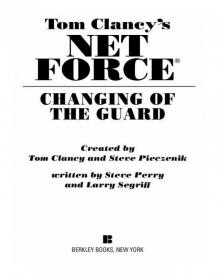 Changing of the Guard
Changing of the Guard Clear and Present Danger
Clear and Present Danger Hounds of Rome
Hounds of Rome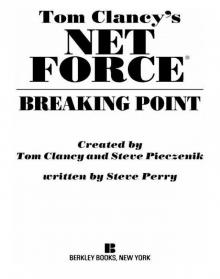 Breaking Point
Breaking Point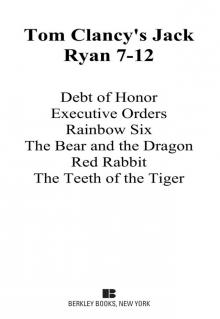 Tom Clancy's Jack Ryan Books 7-12
Tom Clancy's Jack Ryan Books 7-12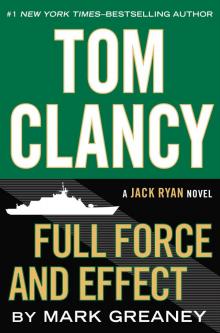 Full Force and Effect
Full Force and Effect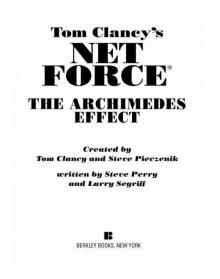 The Archimedes Effect
The Archimedes Effect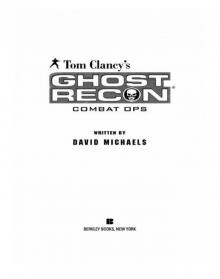 Combat Ops
Combat Ops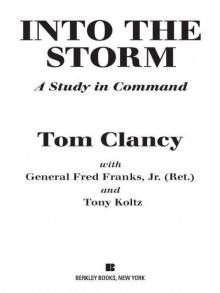 Into the Storm: On the Ground in Iraq
Into the Storm: On the Ground in Iraq Under Fire
Under Fire Point of Impact
Point of Impact Red Rabbit
Red Rabbit Rainbow Six
Rainbow Six The Hunt for Red October
The Hunt for Red October The Teeth of the Tiger
The Teeth of the Tiger Conviction (2009)
Conviction (2009)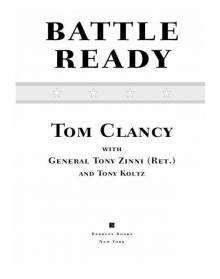 Battle Ready
Battle Ready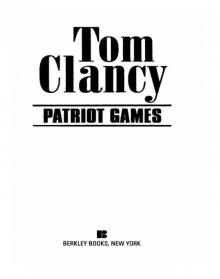 Patriot Games
Patriot Games The Sum of All Fears
The Sum of All Fears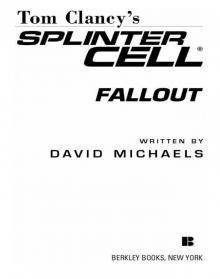 Fallout (2007)
Fallout (2007) Red Storm Rising
Red Storm Rising The Cardinal of the Kremlin
The Cardinal of the Kremlin Executive Orders
Executive Orders Lincoln, the unknown
Lincoln, the unknown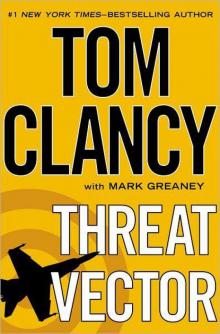 Threat Vector
Threat Vector The Hunted
The Hunted Shadow Warriors: Inside the Special Forces
Shadow Warriors: Inside the Special Forces End Game
End Game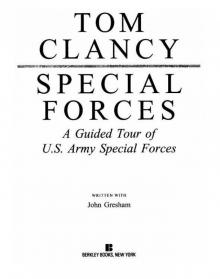 Special Forces: A Guided Tour of U.S. Army Special Forces
Special Forces: A Guided Tour of U.S. Army Special Forces Locked On
Locked On Line of Sight
Line of Sight Tom Clancy Enemy Contact - Mike Maden
Tom Clancy Enemy Contact - Mike Maden Fighter Wing: A Guided Tour of an Air Force Combat Wing
Fighter Wing: A Guided Tour of an Air Force Combat Wing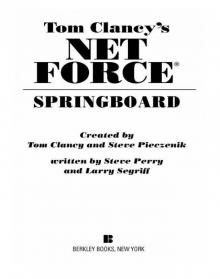 Springboard
Springboard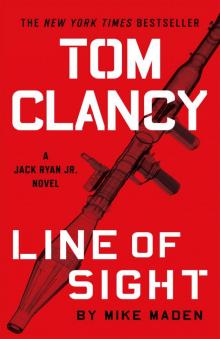 Line of Sight - Mike Maden
Line of Sight - Mike Maden EndWar
EndWar Dead or Alive
Dead or Alive Tom Clancy Support and Defend
Tom Clancy Support and Defend Checkmate
Checkmate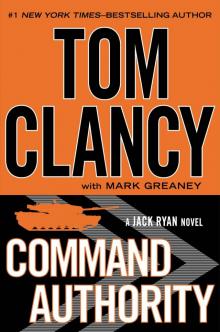 Command Authority
Command Authority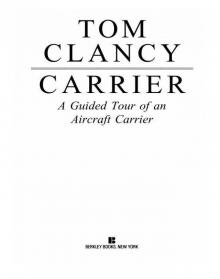 Carrier: A Guided Tour of an Aircraft Carrier
Carrier: A Guided Tour of an Aircraft Carrier Blacklist Aftermath
Blacklist Aftermath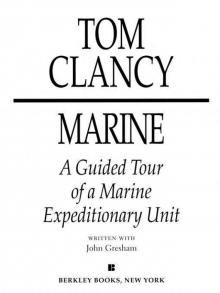 Marine: A Guided Tour of a Marine Expeditionary Unit
Marine: A Guided Tour of a Marine Expeditionary Unit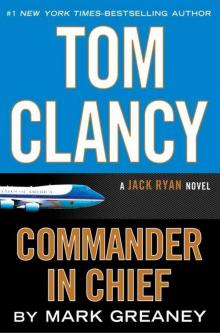 Commander-In-Chief
Commander-In-Chief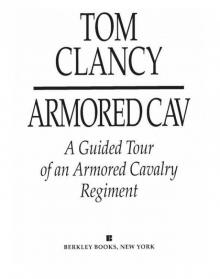 Armored Cav: A Guided Tour of an Armored Cavalry Regiment
Armored Cav: A Guided Tour of an Armored Cavalry Regiment Tom Clancy's Jack Ryan Books 1-6
Tom Clancy's Jack Ryan Books 1-6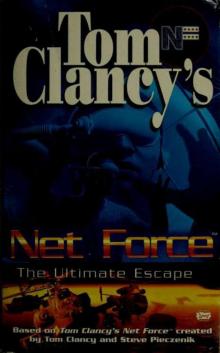 The Ultimate Escape
The Ultimate Escape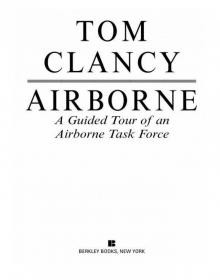 Airborne: A Guided Tour of an Airborne Task Force
Airborne: A Guided Tour of an Airborne Task Force Debt of Honor
Debt of Honor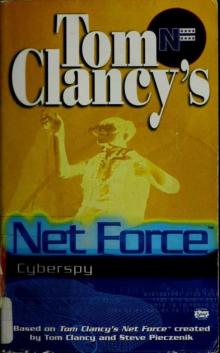 Cyberspy
Cyberspy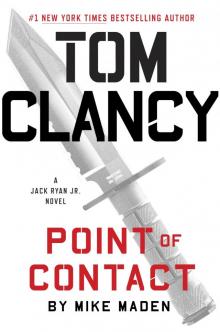 Point of Contact
Point of Contact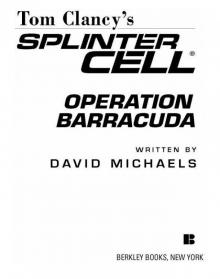 Operation Barracuda (2005)
Operation Barracuda (2005)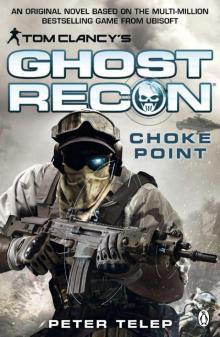 Choke Point
Choke Point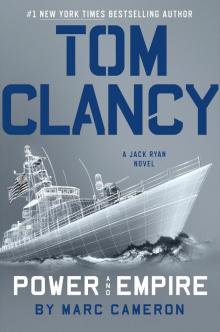 Power and Empire
Power and Empire Every Man a Tiger: The Gulf War Air Campaign
Every Man a Tiger: The Gulf War Air Campaign Endgame (1998)
Endgame (1998)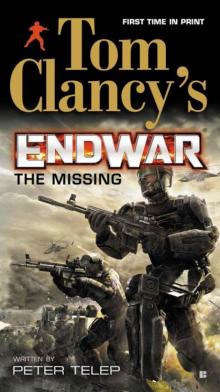 EndWar: The Missing
EndWar: The Missing Splinter Cell (2004)
Splinter Cell (2004) The Great Race
The Great Race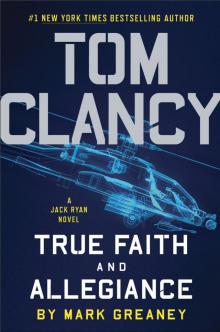 True Faith and Allegiance
True Faith and Allegiance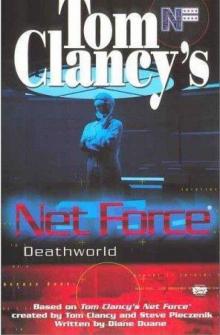 Deathworld
Deathworld Ghost Recon (2008)
Ghost Recon (2008)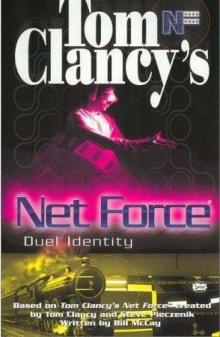 Duel Identity
Duel Identity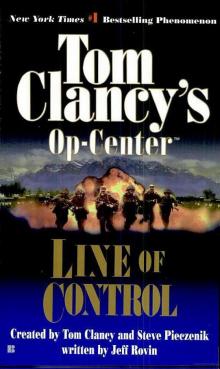 Line of Control o-8
Line of Control o-8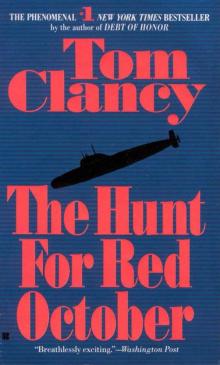 The Hunt for Red October jr-3
The Hunt for Red October jr-3 Hidden Agendas nf-2
Hidden Agendas nf-2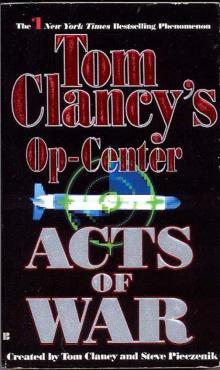 Acts of War oc-4
Acts of War oc-4 Ruthless.Com pp-2
Ruthless.Com pp-2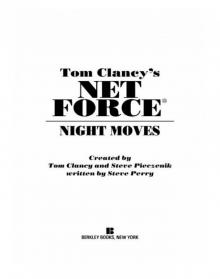 Night Moves
Night Moves The Hounds of Rome - Mystery of a Fugitive Priest
The Hounds of Rome - Mystery of a Fugitive Priest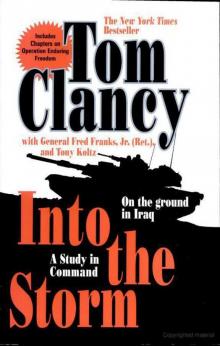 Into the Storm: On the Ground in Iraq sic-1
Into the Storm: On the Ground in Iraq sic-1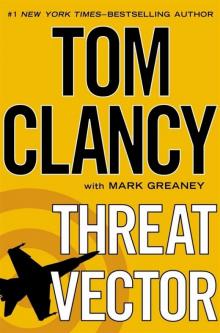 Threat Vector jrj-4
Threat Vector jrj-4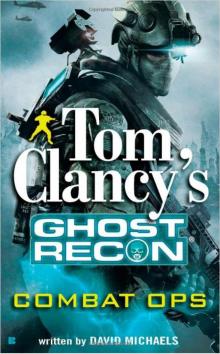 Combat Ops gr-2
Combat Ops gr-2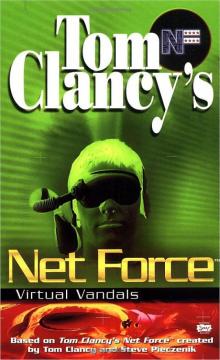 Virtual Vandals nfe-1
Virtual Vandals nfe-1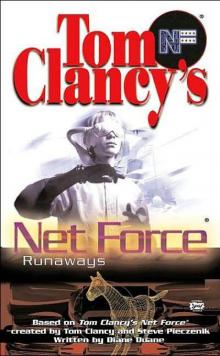 Runaways nfe-16
Runaways nfe-16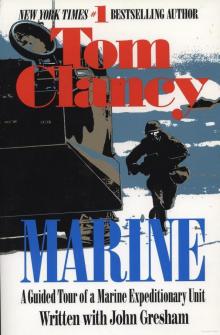 Marine: A Guided Tour of a Marine Expeditionary Unit tcml-4
Marine: A Guided Tour of a Marine Expeditionary Unit tcml-4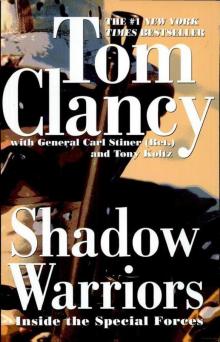 Shadow Warriors: Inside the Special Forces sic-3
Shadow Warriors: Inside the Special Forces sic-3 Jack Ryan Books 1-6
Jack Ryan Books 1-6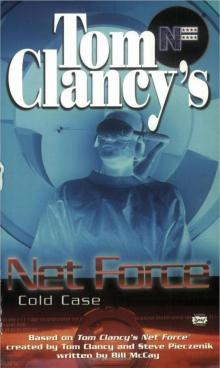 Cold Case nfe-15
Cold Case nfe-15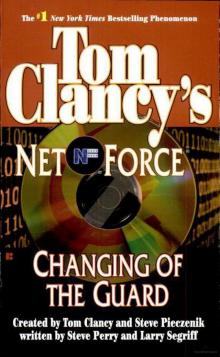 Changing of the Guard nf-8
Changing of the Guard nf-8 Splinter Cell sc-1
Splinter Cell sc-1 Battle Ready sic-4
Battle Ready sic-4 The Bear and the Dragon jrao-11
The Bear and the Dragon jrao-11 Fighter Wing: A Guided Tour of an Air Force Combat Wing tcml-3
Fighter Wing: A Guided Tour of an Air Force Combat Wing tcml-3 Patriot Games jr-1
Patriot Games jr-1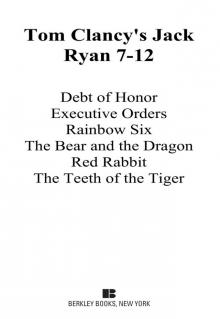 Jack Ryan Books 7-12
Jack Ryan Books 7-12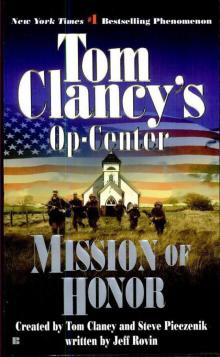 Mission of Honor o-9
Mission of Honor o-9 Private Lives nfe-9
Private Lives nfe-9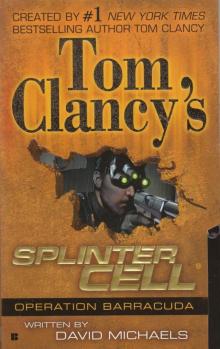 Operation Barracuda sc-2
Operation Barracuda sc-2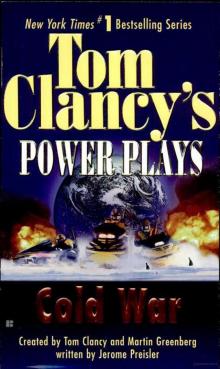 Cold War pp-5
Cold War pp-5 Point of Impact nf-5
Point of Impact nf-5 Red Rabbit jr-9
Red Rabbit jr-9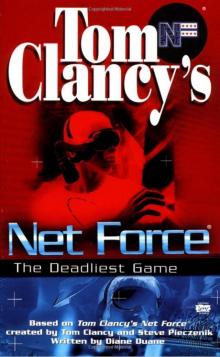 The Deadliest Game nfe-2
The Deadliest Game nfe-2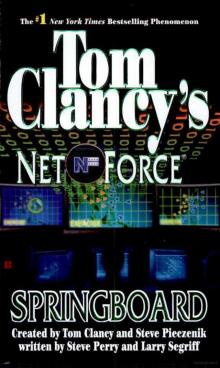 Springboard nf-9
Springboard nf-9 Safe House nfe-10
Safe House nfe-10 EndWar e-1
EndWar e-1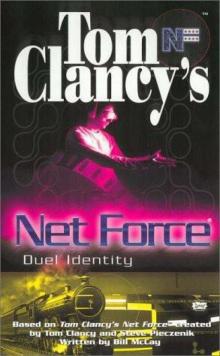 Duel Identity nfe-12
Duel Identity nfe-12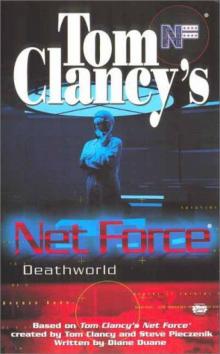 Deathworld nfe-13
Deathworld nfe-13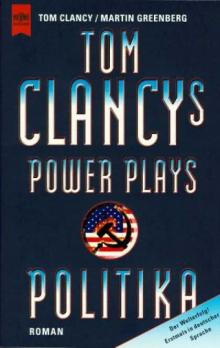 Politika pp-1
Politika pp-1 Rainbow Six jr-9
Rainbow Six jr-9 Tom Clancy's Power Plays 1 - 4
Tom Clancy's Power Plays 1 - 4 Endgame sc-6
Endgame sc-6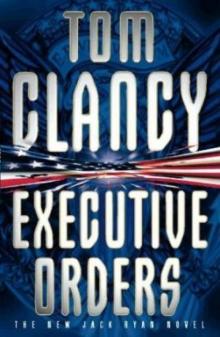 Executive Orders jr-7
Executive Orders jr-7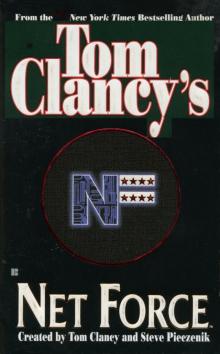 Net Force nf-1
Net Force nf-1 Call to Treason o-11
Call to Treason o-11 Locked On jrj-3
Locked On jrj-3 Against All Enemies
Against All Enemies The Sum of All Fears jr-7
The Sum of All Fears jr-7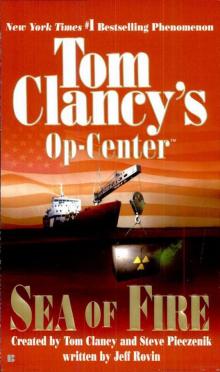 Sea of Fire o-10
Sea of Fire o-10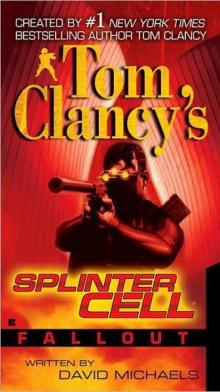 Fallout sc-4
Fallout sc-4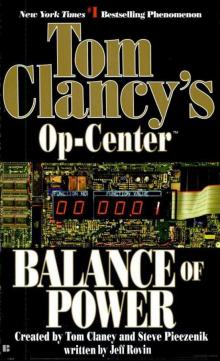 Balance of Power o-5
Balance of Power o-5 Shadow Watch pp-3
Shadow Watch pp-3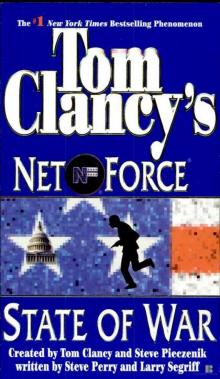 State of War nf-7
State of War nf-7 Wild Card pp-8
Wild Card pp-8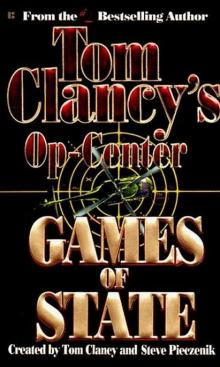 Games of State o-3
Games of State o-3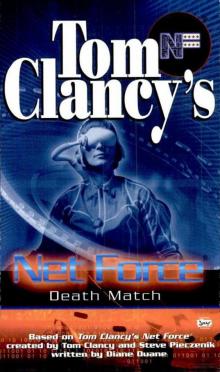 Death Match nfe-18
Death Match nfe-18 Against All Enemies mm-1
Against All Enemies mm-1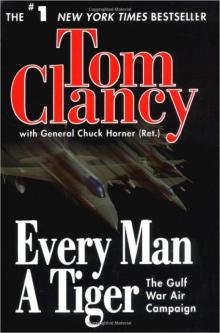 Every Man a Tiger: The Gulf War Air Campaign sic-2
Every Man a Tiger: The Gulf War Air Campaign sic-2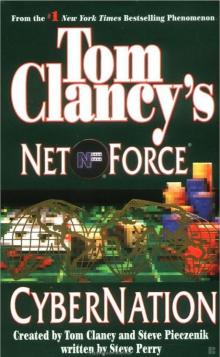 Cybernation nf-6
Cybernation nf-6 Support and Defend
Support and Defend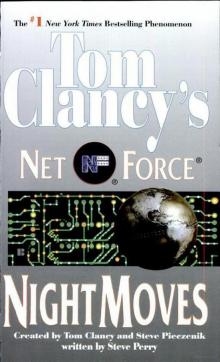 Night Moves nf-3
Night Moves nf-3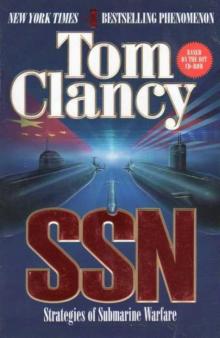 SSN
SSN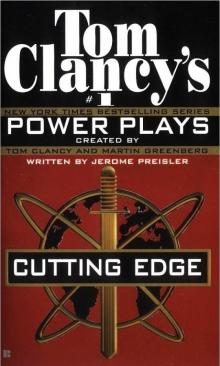 Cutting Edge pp-6
Cutting Edge pp-6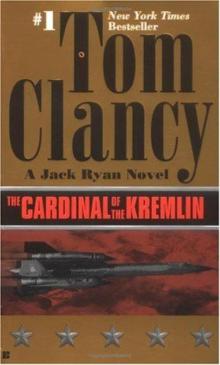 The Cardinal of the Kremlin jrao-5
The Cardinal of the Kremlin jrao-5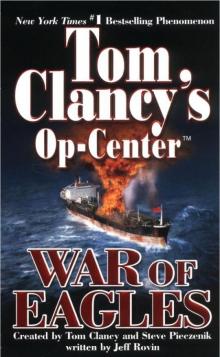 War of Eagles o-12
War of Eagles o-12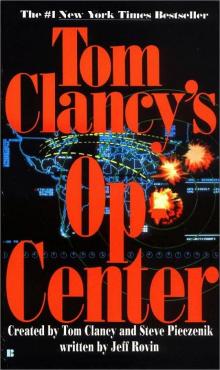 Op-Center o-1
Op-Center o-1 Mirror Image o-2
Mirror Image o-2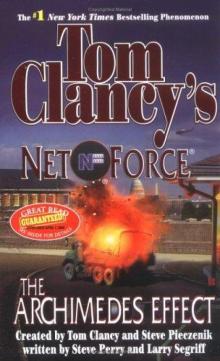 The Archimedes Effect nf-10
The Archimedes Effect nf-10 Teeth of the Tiger jrj-1
Teeth of the Tiger jrj-1 Bio-Strike pp-4
Bio-Strike pp-4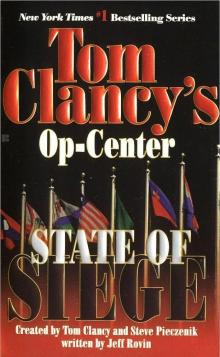 State of Siege o-6
State of Siege o-6 Debt of Honor jr-6
Debt of Honor jr-6 Zero Hour pp-7
Zero Hour pp-7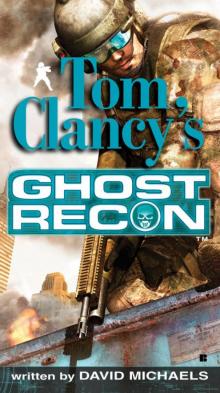 Ghost Recon gr-1
Ghost Recon gr-1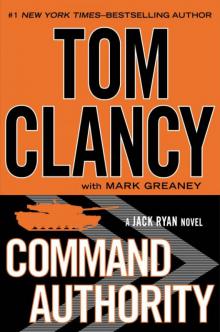 Command Authority jr-10
Command Authority jr-10 Tom Clancy's Power Plays 5 - 8
Tom Clancy's Power Plays 5 - 8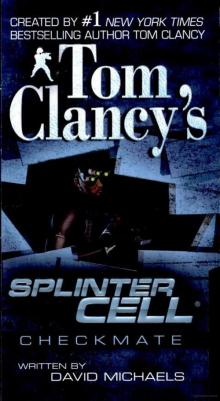 Checkmate sc-3
Checkmate sc-3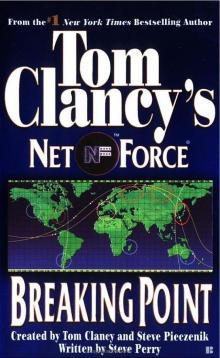 Breaking Point nf-4
Breaking Point nf-4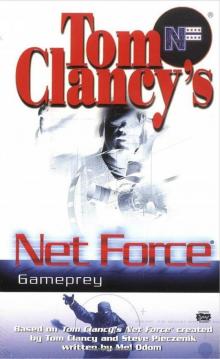 Gameprey nfe-11
Gameprey nfe-11 The Hunted e-2
The Hunted e-2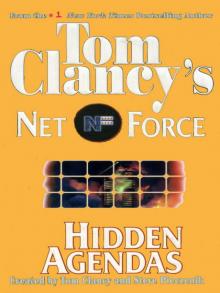 Hidden Agendas
Hidden Agendas Divide and Conquer o-7
Divide and Conquer o-7